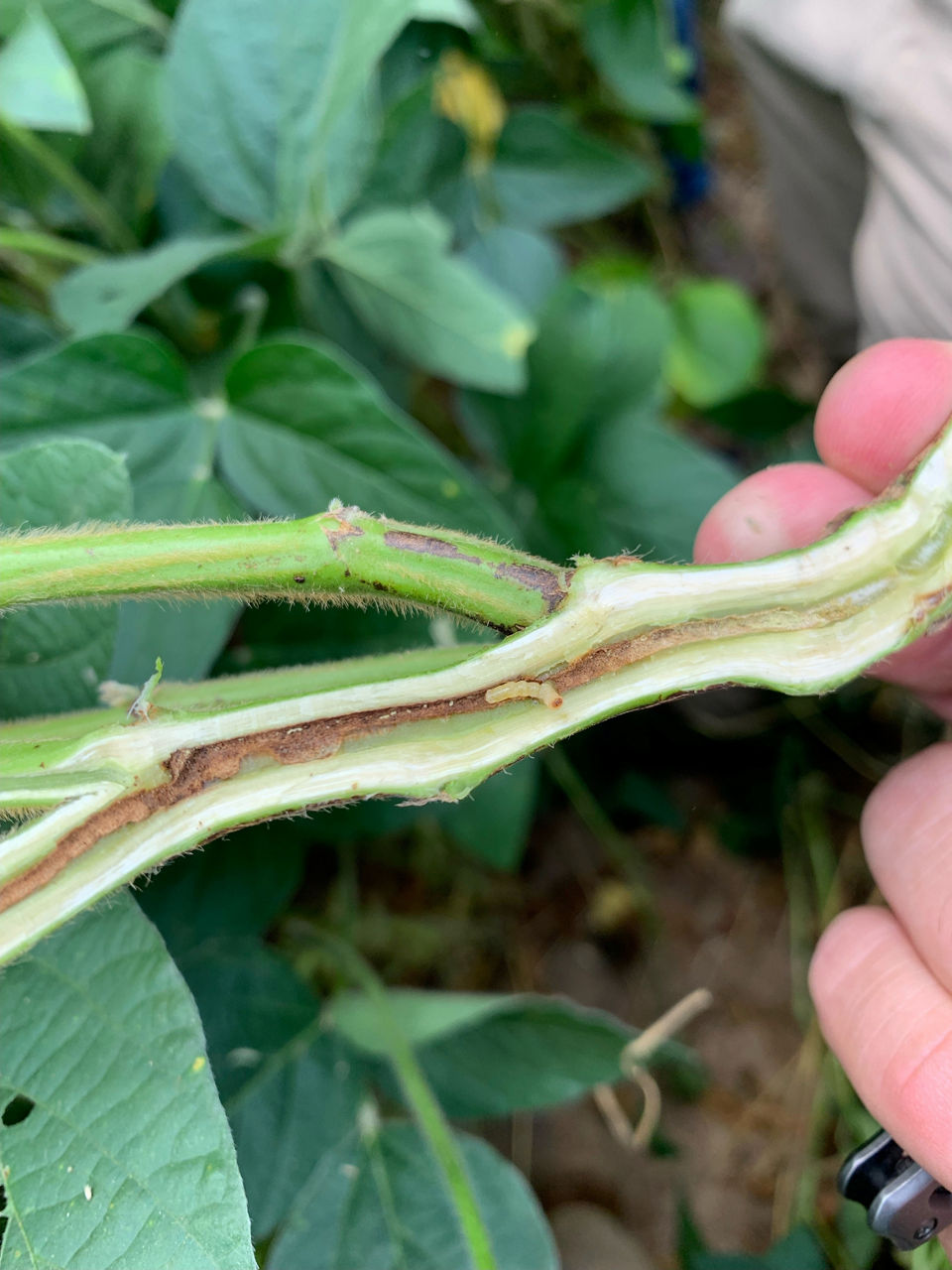Dectes Stem Borer Identification and Management
November 21, 2023
Dectes stem borer is a soybean pest which many growers face on an annual basis. Because of the larva’s feeding habit, leaf loss, premature plant death, yield loss, and harvest standability issues can occur.
Insect Identification
Identifying dectes stem borer can be accomplished during the adult and larval stages. The beetle stage can be identified by its long slender grey body and its antennae which are long in comparison to its body and often has a striped zebra appearance (Figure 1). The larvae are small (1/16 of an inch long) after hatching but grow to be nearly 5/8 of an inch long when larval development is complete. The larva also has an “accordion” appearance (Figure 2). The larval stage is likely to be found inside the stem/leaf petiole where it eats the pith (Figure 3). The pupae are yellowish white and are about the size of a house fly larvae (maggots).



Life Cycle and Damage
The adults emerge from the pupal stage in late June to early July. After mating the female chews a hole in the petiole or stem and deposits an egg. Up to fifty total eggs may be laid. The larva hatch and begin feeding until they overwinter.
Most of the damage occurs during the larval stage. After hatching, the larvae feed briefly on exterior plant tissue before boring into the petioles and plant stem. Larval damage can often be identified when individual leaflets start dying. An otherwise healthy plant may have one or two wilted leaflets. In many cases, the petiole of the wilted leaflets can be pulled from the stem because the pith has been tunneled out. After initial petiole feeding, the larva begins traveling and feeding down the stem to around two to five inches above the soil and girdles the stem, which can cause premature plant death. This often occurs when the larva is preparing for overwintering. The damage can be mistaken for diseases such as sudden death syndrome and phytophthora root rot because they can also cause premature plant death. Because of these similarities, it is important to split the stem and look for larval damage. If girdling is widespread within a field, the field should be prioritized for harvest because of lodging potential.
During much of the season, several larvae may be found in a plant. However, the larvae are cannibalistic and become more so when preparing for overwintering. Therefore, only one larva may be found in a mature lodged plant.
Insect Management
Dectes stem borer is a challenging insect to manage. One cultural control method would be to use tillage to breakdown the residue and help limit the number of overwintering larvae. Foliar insecticides are difficult to use for adult control because:
- Most insecticides have little to no effect on the beetle.
- The window for applying an insecticide application to emerging adults is small.
- The amount of damage observed from this pest rarely reaches the threshold in which an insecticide application can have a positive return on investment.
Summary
Dectes stem borer can be a detrimental soybean pest. The insect can limit the amount of photosynthetic area a plant has by prematurely killing leaflets and/or the entire plant. Managing this insect can be done by utilizing tillage to help reduce the number of overwintering larvae and in many cases, this is the only consistent management approach. It is important to prioritize the harvesting of fields with damage given the potential standability problems the pest can create.
Channel Agronomist
Cody Hornaday
Sources:
Stewart, S., Thompson, A., and Patrick, R. Dectes stem borer. Soybean Insects. W197. University of Tennessee Extension. https://extension.tennessee.edu/publications/documents/W197.pdf
Boyd, M.L. and Bailey, W.C. 2005. Soybean pest management: Dectes stem borer. University of Missouri Extension. https://extension.missouri.edu/publications/g7152
Wright, B. Before 2015. Dectes stem borer emerging in soybeans. CROPWATCH. University of Nebraska-Lincoln. https://cropwatch.unl.edu/dectes-stem-borer-emerging-soybeans.
Hamby, K., Leslie, A., and Owens, D. 2022. Dectes stem borer management in soybeans. FS-1196. University of Maryland Extension.
Web sites verified 10/17/23 1110_307454
You may also like...
Here are some articles that may also be of interest to you